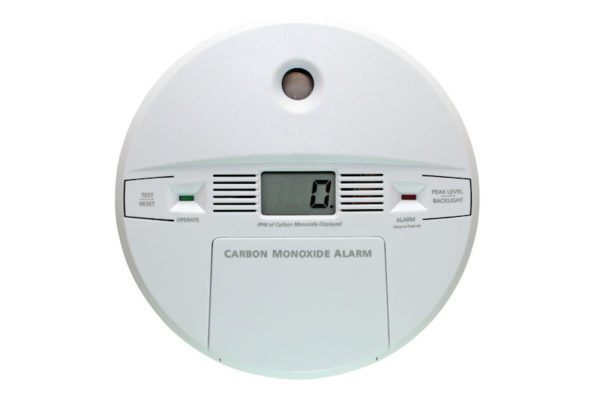Frost on the pumpkins. Leaves turning and falling. Last week, some people here in Maine even woke up to a dusting of snow. Are you ready for winter? One thing to be aware of as the temperature drops is the risk of carbon monoxide (CO) poisoning. Especially if you ever use a space heater for extra warmth.
Anything that burns fuel can be a source of carbon monoxide. The gas is produced when the fuel is not completely combusted, which can happen if an item or appliance is poorly maintained or not used or vented properly. According to the U.S. Consumer Product Safety Commission, “more than 150 people in the United States die every year from accidental non-fire related CO poisoning associated with consumer products, including generators.”
Carbon monoxide sources
- Generators
- Furnaces
- Wood stoves
- Kerosene heaters
- Gas-powered tools
- Gas-powered home appliances
- Gar and charcoal grills
- Cars, trucks and other vehicles
How to lessen your risk of carbon monoxide poisoning
(Courtesy Maine CDC and the Environmental Protection Agency)
- Place generators outdoors. Never put one in an enclosed or semi-enclosed space, such as a basement, cellar bulkhead or attached garage.
- Keep generator dry and protected from ice and snow. Dry your hands before touching a generator.
- Make sure the generator is at least 15 feet away from windows or doors into the home.
- Use kerosene heaters in a well-ventilated room, by either keeping doors to other rooms open or opening a window at least 1-inch.
- Only use K-1 grade fuel in a kerosene heater. Follow instructions for setting the wick height.
- Do not use outdoor cooking devices, such as gas or charcoal grills or gas camp stoves, indoors — not even in a fireplace.
- Do not use indoor gas cooking stoves for heat.
- Keep chimney flue and a window open when you burn decorative gas fireplace logs for heat.
- Place a carbon monoxide detector that is battery powered or has battery back up power outside each sleeping area. Look for the UL mark with the “Single Station Carbon Monoxide Alarm” statement.
- Change the batteries in your carbon monoxide detector each time you change your clock for daylight savings time.
- NEVER ignore a carbon monoxide alarm.
- Check and clean your chimney at least once a year.
- Don’t idle the car, snowmobile or any other vehicle in a garage, even if a door to the outside is open. Fumes can
build up very quickly in the garage and living area of your home. - Do not use pressure washers, chainsaws and any other gas-powered tool inside the house, garage or an enclosed area, such as a barn or shed.
- Have fuel-burning appliances, including oil and gas furnaces, gas water heaters, gas ranges and ovens, gas dryers, gas or kerosene space heaters, fireplaces, and wood stoves, inspected by a trained professional at the beginning of every heating season.
- Make certain that flues and chimneys are connected, in good condition, and not blocked.
- Choose appliances that vent their fumes to the outside whenever possible, have them properly installed, and maintain them according to manufacturers’ instructions.
The problem with carbon monoxide is it’s a gas that you can’t see, smell or taste. Early symptoms of CO poisoning can seem just like the flu, only without a fever. It doesn’t take long for the situation to become serious — for someone who has been poisoned to lose consciousness and possibly die.
Symptoms of carbon monoxide poisoning
- Headache
- Dizziness
- Fatigue
- Shortness of breath
- Nausea
- Vomiting
- Unconsciousness
- Death
What to do if you suspect carbon monoxide poisoning
If you or someone you are caring for has any of the above symptoms and you suspect CO poisoning, you should:
- Get out of the building immediately.
- Call the local fire department or 911.
- Get medical attention. Call your physician or the Northern New England Poison Center (800-222-1222).
- Do not go back into the building until you know for certain that the CO levels are safe.
Treating carbon monoxide poisoning
Treatment involves reducing carbon monoxide levels in the blood.
- Breathing pure oxygen through a mask or a ventilator if you can’t breathe on your own.
- Hyperbaric oxygen therapy may be used in severe cases or for pregnant women because unborn babies are very susceptible to the effects of carbon monoxide.
Most people who are treated right away recover within a few days. Some long-term problems can occur so be sure to watch for changes in vision, coordination or behavior.
An ounce of prevention
Of course, the best treatment is prevention, so be sure to go over the list of things you can do to reduce your risk of carbon monoxide poisoning. Be aware of elderly relatives or friends who are still living in their own homes, especially if you have noticed any worrisome signs that they may need extra help.
Stay warm and safe this winter. I heard a rumor the other day that it might be a mild one this year. Fingers crossed!



Hi Diane,
Great information and I’d just like to add that cars can also have the same problem. I’ve had a muffler with a hole in it right below the driver’s side that was letting carbon monoxide into the car. Also, for folks that have SUV’s with back gates and flip up windows, they can be a problem if the rubber lining around both become brittle and let fumes in. I always leave a crack in the window in all seasons.
Thanks so much for your informative articles. Cindy
Cindy, thank you so much for that additional information. I never even thought about cars. I hope you didn’t get sick from yours.
Diane